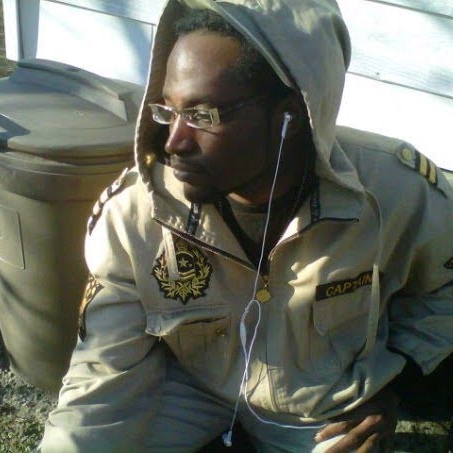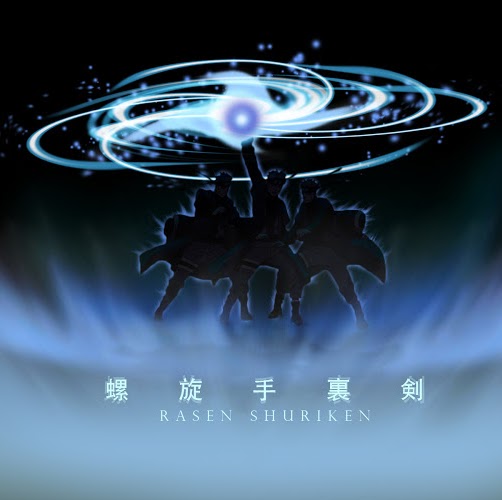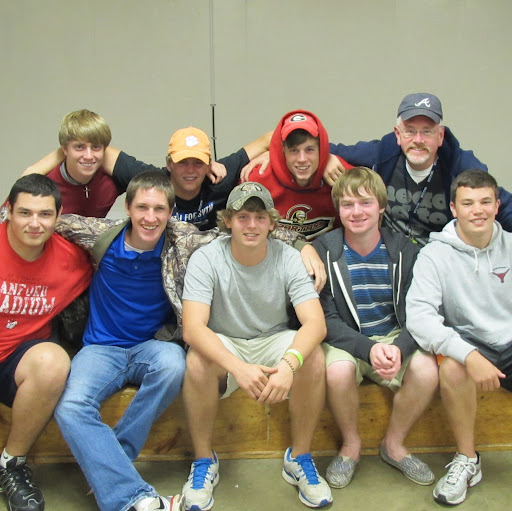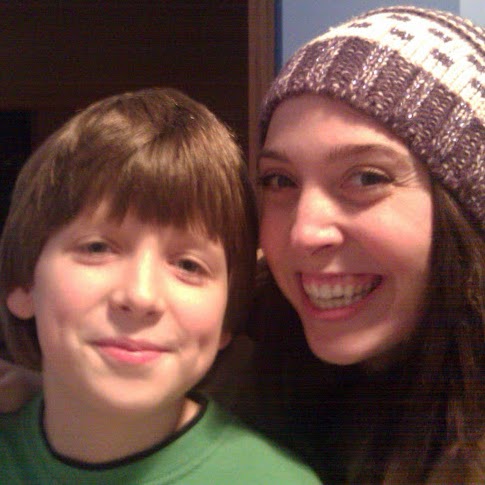Ronald J Barnes
age ~43
from Montross, VA
- Also known as:
-
- Ronald Jerome Barnes
- Ron J Barnes
- Ronald J Barnesjr
- Ronald J Barnse
Ronald Barnes Phones & Addresses
- Montross, VA
- Colonial Beach, VA
- Washington, DC
- North Beach, MD
- San Leandro, CA
- Laurel, MD
- 1907 Flat Iron Rd, Montross, VA 22520 • 8044678433
Work
-
Position:Sales Occupations
Education
-
Degree:Bachelor's degree or higher
Resumes

Ronald Barnes Brandywine, MD
view sourceWork:
Johnson C. Smith University
2013 to 2000
Camp Counselor Johnson C. Smith University
2009 to 2000 AASSTC
Lee, WA
2009 to 2011
Active Aces Super Senior Tennis Club
2013 to 2000
Camp Counselor Johnson C. Smith University
2009 to 2000 AASSTC
Lee, WA
2009 to 2011
Active Aces Super Senior Tennis Club
Education:
Johnson C. Smith University
Charlotte, NC
Jun 2014
Bachelor of Arts in Criminal Justice Northwestern High School
Hyattsville, MD
Jun 2009
High School Diploma
Charlotte, NC
Jun 2014
Bachelor of Arts in Criminal Justice Northwestern High School
Hyattsville, MD
Jun 2009
High School Diploma

Ronald Barnes West Haven, CT
view sourceWork:
Sam Ash Music Store
New Haven, CT
Nov 2013 to Jan 2014
Sales Associate 3PL Worldwide, Inc
Milford, CT
Mar 2011 to Apr 2013
Inventory Specialist Northrop Grumman
Falls Church, VA
Jun 1999 to Aug 2004
Stage Builder
New Haven, CT
Nov 2013 to Jan 2014
Sales Associate 3PL Worldwide, Inc
Milford, CT
Mar 2011 to Apr 2013
Inventory Specialist Northrop Grumman
Falls Church, VA
Jun 1999 to Aug 2004
Stage Builder
Education:
FRANKILIN VA HIGH SCHOOL
Jun 1999
High School Diploma
Jun 1999
High School Diploma

Ronald Barnes Davenport, IA
view sourceWork:
Cobham Mission Equipment
Jan 2008 to 2000
Structural Analysis Lead (Current) Cobham Mission Equipment
Seattle, WA
2012 to 2013
Member of Boeing Tiger Team Cobham Mission Equipment
2010 to 2012
NDLO - Stress Lead Boeing Long Beach
Sep 2006 to Dec 2008
Sr. Stress Engineer Northrop Grumman El Segundo
2005 to Sep 2006
Sr Stress Engineer Boeing
Sep 2004 to Apr 2005
Sr Stress Engineer Northrop
Nov 2002 to Aug 2004
Sr Stress Engineer Hartwell Corporation
Mar 2000 to Nov 2002
Stress Analysis Supervisor Started corporation
Sep 1997 to 2000
contract engineer Boeing Satellite Division
Jun 1991 to Sep 1997
Responsible Engineering Authority (REA) Boeing Satellite Division
1994 to 1997
Structural supervisor
Jan 2008 to 2000
Structural Analysis Lead (Current) Cobham Mission Equipment
Seattle, WA
2012 to 2013
Member of Boeing Tiger Team Cobham Mission Equipment
2010 to 2012
NDLO - Stress Lead Boeing Long Beach
Sep 2006 to Dec 2008
Sr. Stress Engineer Northrop Grumman El Segundo
2005 to Sep 2006
Sr Stress Engineer Boeing
Sep 2004 to Apr 2005
Sr Stress Engineer Northrop
Nov 2002 to Aug 2004
Sr Stress Engineer Hartwell Corporation
Mar 2000 to Nov 2002
Stress Analysis Supervisor Started corporation
Sep 1997 to 2000
contract engineer Boeing Satellite Division
Jun 1991 to Sep 1997
Responsible Engineering Authority (REA) Boeing Satellite Division
1994 to 1997
Structural supervisor
Education:
UCLA
2002
Project Management Certification American Intercontinental University
Los Angeles, CA
2001
Masters of Information Technology Los Angeles Howard University
Washington, DC
1991
Bachelors of Science in Science of Mechanical Engineering
2002
Project Management Certification American Intercontinental University
Los Angeles, CA
2001
Masters of Information Technology Los Angeles Howard University
Washington, DC
1991
Bachelors of Science in Science of Mechanical Engineering
Skills:
Patran, Nastran, FEMAP, Hand Calculations, Fatigue
Medicine Doctors

Ronald L. Barnes
view sourceSpecialties:
Family Medicine, Occupational Medicine
Work:
Forsyth Professional Center
241 W Weaver Rd STE 145B, Forsyth, IL 62535
2178765220 (phone), 2178765226 (fax)
241 W Weaver Rd STE 145B, Forsyth, IL 62535
2178765220 (phone), 2178765226 (fax)
Education:
Medical School
University of Illinois, Chicago College of Medicine
Graduated: 1997
University of Illinois, Chicago College of Medicine
Graduated: 1997
Procedures:
Electrocardiogram (EKG or ECG)
Vaccine Administration
Vaccine Administration
Conditions:
Acne
Acute Bronchitis
Acute Conjunctivitis
Acute Pharyngitis
Acute Sinusitis
Acute Bronchitis
Acute Conjunctivitis
Acute Pharyngitis
Acute Sinusitis
Languages:
English
Description:
Dr. Barnes graduated from the University of Illinois, Chicago College of Medicine in 1997. He works in Forsyth, IL and specializes in Family Medicine and Occupational Medicine. Dr. Barnes is affiliated with Decatur Memorial Hospital.

Ronald Barnes
view sourceSpecialties:
Occupational Medicine
Work:
Tripler Army Medical Center Occupational Health
1 Jarrett White Rd STE 71016, Tripler Army Medical Center, HI 96859
8084335704 (phone), 8084339914 (fax)
1 Jarrett White Rd STE 71016, Tripler Army Medical Center, HI 96859
8084335704 (phone), 8084339914 (fax)
Languages:
English
Description:
Dr. Barnes works in Tripler Army Medical Center, HI and specializes in Occupational Medicine. Dr. Barnes is affiliated with Tripler Army Medical Center.
License Records
Ronald Barnes
License #:
2705022943 - Expired
Category:
Contractor
Issued Date:
Jan 5, 1994
Expiration Date:
Jan 31, 2000
Type:
Class A
Ronald W Barnes
License #:
2408 - Active
Category:
Nursing Home Administration
Issued Date:
Oct 3, 2013
Effective Date:
Oct 3, 2013
Expiration Date:
Dec 31, 2018
Type:
Nursing Home Administrator
Isbn (Books And Publications)

Name / Title
Company / Classification
Phones & Addresses
Director
DIGITAL PAYMENT TECHNOLOGIES CORP
Chairman
Digital Payment Technologies Corp
Huron Management, LLC
20275 Mack St, Hayward, CA 94545
RBXTREME CLEANING, LLC
CINCINNATI CELLULAR OF EASTGATE MALL, LLC
CINCINNATI CELLULAR OF NORTHGATE MALL, LLC
KALLAY INVESTMENTS, INC
RON PROPERTIES, LLC
Us Patents
-
Computer System Motherboard Stiffener
view source -
US Patent:6362968, Mar 26, 2002
-
Filed:Jun 28, 1999
-
Appl. No.:09/340961
-
Inventors:Robert J. Lajara - San Jose CA
Hassan Siahpolo - Campbell CA
Ronald Barnes - Livermore CA
Kenneth Kitlas - San Jose CA -
Assignee:Sun Microsystems, Inc. - Palo Alto CA
-
International Classification:H05K 714
-
US Classification:361752, 361753, 361756, 361759, 361801, 361808, 211 4117, 3122651
-
Abstract:A stiffener for a printed circuit board where the stiffener is placed between the printed circuit board and a wall of the metal chassis in a computer system housing. The loaded printed circuit board may first be mounted on the stiffener, which, in turn, may then be mounted on the appropriate wall of the chassis along with the circuit board. Alternately, the stiffener may first be mounted on the appropriate chassis wall, and the circuit board may then be mounted on the stiffener. Additional circuit components may then be added onto the circuit board. The lies between the circuit board and the wall of the chassis on which the circuit board is being mounted. The back plane support provided by the stiffener may reduce damage to the conducting paths of the printed circuit board due to pressures exerted during component mounting, manufacture, transportation, etc. Additionally, a circuit board carrying densely populated electronic components may be easily mounted on or removed from the chassis without damage. Adequate board-to-chassis grounding may also be accomplished through the sheet metal stiffener frame.
-
Computer System Housing And Configuration
view source -
US Patent:6373697, Apr 16, 2002
-
Filed:Jun 28, 1999
-
Appl. No.:09/340960
-
Inventors:Robert J. Lajara - San Jose CA
Milton C. Lee - Mountain Vu CA
Alan Lee Minick - San Jose CA
Kenneth A. Lown - Sunnyvale CA
Wayman Lee - Los Altos CA
Barry Marshall - San Jose CA
Anita Patel - Palo Alto CA
Steve J. Furuta - Santa Clara CA
Kenneth Kitlas - San Jose CA
Ronald Barnes - Livermore CA -
Assignee:Sun Microsystems, Inc. - Palo Alto CA
-
International Classification:G06F 120
-
US Classification:361687, 361697, 361700, 165122, 174 152
-
Abstract:A computer system housing with a curved bezel that forms one or more sideways gap between a side of the computer housing chassis and the bezel attached to that side. Typically, the curved bezel is attached to the front of the chassis with each sideways gap extending perpendicularly from the front of the chassis to a predetermined width and stretching to predetermined length along the front of the chassis. The sideways gaps facilitate increased air inlet from the sides and allow efficient cooling of various system components that are mounted on the chassis and housed within the housing. One or more cooling fans may be mounted at different locations within the housing to optimize air circulation and, hence, cooling within the housing. The chassis may be partitioned into two separate sub-chassis for proper positioning of the cooling fans as well as to accommodate changes in computer system configurations with minimized retooling of the chassis.
-
Computer System Housing Configuration
view source -
US Patent:6542362, Apr 1, 2003
-
Filed:Dec 7, 2001
-
Appl. No.:10/011205
-
Inventors:Robert J. Lajara - San Jose CA
Milton C. Lee - Mountain Vw CA
Alan Lee Minick - San Jose CA
Kenneth A. Lown - Sunnyvale CA
Wayman Lee - Los Altos CA
Barry Marshall - San Jose CA
Anita Patel - Palo Alto CA
Steve J. Furuta - Santa Clara CA
Kenneth Kitlas - San Jose CA
Ronald Barnes - Livermore CA -
Assignee:Sun Microsystems, Inc. - Santa Clara CA
-
International Classification:H05K 720
-
US Classification:361687
-
Abstract:A computer system housing with a curved bezel that forms one or more sideways gap between a side of the computer housing chassis and the bezel attached to that side. Typically, the curved bezel is attached to the front of the chassis with each sideways gap extending perpendicularly from the front of the chassis to a predetermined width and stretching to predetermined length along the front of the chassis. The sideways gaps facilitate increased air inlet from the sides and allow efficient cooling of various system components that are mounted on the chassis and housed within the housing. One or more cooling fans may be mounted at different locations within the housing to optimize air circulation and, hence, cooling within the housing. The chassis may be partitioned into two separate sub-chassis for proper positioning of the cooling fans as well as to accommodate changes in computer system configurations with minimized retooling of the chassis.
-
Processor Architecture For Multipass Processing Of Instructions Downstream Of A Stalled Instruction
view source -
US Patent:8266413, Sep 11, 2012
-
Filed:Mar 14, 2007
-
Appl. No.:11/724034
-
Inventors:Ronald Barnes - South Riding VA, US
-
Assignee:The Board of Trustees of the University of Illinois - Urbana IL
-
International Classification:G06F 9/30
-
US Classification:712229, 712219
-
Abstract:A processor triggers a first advanced execution processing pass to an instruction sequence in response to a first stalled instruction and initiates execution of a further instruction in the instruction sequence that stalls during the performance of the first advanced execution processing pass. A second advanced execution pass is performed through the instruction sequence in which the further instruction is processed again to provide a valid result after stalling. In one form, the first instruction is performed while the processor operates in a normal execution mode and the first and second advanced execution processing passes are performed while the processor operates in an advance execution mode.
-
Interfitting Heat Sink And Heat Spreader Slug
view source -
US Patent:59699493, Oct 19, 1999
-
Filed:Mar 31, 1998
-
Appl. No.:9/052817
-
Inventors:David K. J. Kim - San Jose CA
Barry Marshall - San Jose CA
Ronald Barnes - Livermore CA -
Assignee:Sun Microsystems, Inc. - Mountain View CA
-
International Classification:H05K 720
-
US Classification:361704
-
Abstract:A heat transmitting slug is attached to a chip or other heat emitting electronic component by an adhesive. A heat sink is mounted on the slug by one or more screws or other fasteners, preferably with thermal grease between the bottom of the heat sink base and the top of the slug. The top of the slug is formed with a longitudinal tongue and the base of the heat sink with a mating groove. Preferably the base of the heat sink is offset upwardly above the groove to resist tendency to fracture under stress.
-
Multiple Disk Drive Storage Enclosure With Ventilation
view source -
US Patent:59127996, Jun 15, 1999
-
Filed:Jul 1, 1996
-
Appl. No.:8/674027
-
Inventors:William Grouell - San Ramon CA
Michael McCormick - San Jose CA
Ronald Barnes - Livermore CA -
Assignee:Sun Microsystems, Inc. - Mountain View CA
-
International Classification:G06F 116
H05K 720 -
US Classification:361685
-
Abstract:An enclosure is assembled from metal-plated rigid structural foam plastic components to house in minimal space in many hard disk drives. Major components, including the power supply, plug directly to a motherboard at the rear of the enclosure, eliminating internal cables. The parts fit together in snap-in fashion in such manner that the back will not close if parts are not installed properly. For ventilation, slots are formed in the sides and a central partition which permit air from fans on one side to flow laterally across all the disk drives and then out through slots in the opposite side. A side facing door permits easy access to all drives simultaneously for service and upgrade.
-
Heat Sink Attachment
view source -
US Patent:61341126, Oct 17, 2000
-
Filed:Jun 27, 1997
-
Appl. No.:8/883849
-
Inventors:Herbert E. LeCornu - Newark CA
Ronald Barnes - Livermore CA
Nagaraj P. Mitty - San Jose CA -
Assignee:Sun Microsystems, Inc. - Palo Alto CA
-
International Classification:H05K 720
-
US Classification:361720
-
Abstract:To restrain detachment of heat sinks from printed circuit boards (PCBs) or the components mounted on such boards, a body is attached to the board and extends above the tops of the heat sinks. Above each heat sink, three sides of a rectangle are cut from the body, leaving one side uncut. The tongue thus formed is curved downwards to form a spring which bears against the top of the heat sink to protect the heat sink from disengagement. The body is formed with vertical ends or legs having outward bent feet which are secured to the PCB by screws or other fasteners or are fit through slots in the PCB. A slanted tongue may also be cut from the body to engage an upper corner of a heat sink to restrain the heat sink from lateral movement relative to the PCB.
-
Module Of Enclosure For Electronic Cards
view source -
US Patent:59911573, Nov 23, 1999
-
Filed:Mar 31, 1998
-
Appl. No.:9/052872
-
Inventors:David K. J. Kim - San Jose CA
Barry Marshall - San Jose CA
Ronald Barnes - Livermore CA -
Assignee:Sun Microsystems, Inc. - Mountain View CA
-
International Classification:H05K 720
-
US Classification:361719
-
Abstract:A module consists of a shroud or enclosure attached to a card containing heat-emitting electronic components or to a stack of two or more vertically spaced cards; one or all of which have heat sinks in thermal contact with at least some of the electronic components. The shroud is apertured to control air flow in many directions over the components and heatsinks. A hinge member extends along one edge of the module shaped to be inserted in a slot in a panel to establish a hinge. As the shroud is pivoted about the hinge, horizontal electrical contacts on the panel and at least one card interengage and vertical contacts on one of the cards remote from the hinge simultaneously interengage. The contour of the shroud aids in installing or removing the module.
Classmates

Ronald Barnes
view sourceSchools:
Adams Elementary School Ft. Wayne IN 1967-1970
Community:
Dave Fleming, Kenneth Lynch, Jacqueline Fallucco

Ronald Barnes
view sourceSchools:
Collins High School Collins MS 1983-1987
Community:
Arthur Robinson

Ronald E. Barnes
view sourceSchools:
Mt. Comfort High School Mt. Comfort IN 1958-1962
Community:
Albert Gruber, Larry Martin, Robert Bereman, Michael Mcneil

Ronald Barnes
view sourceSchools:
Parkway West High School Oakdale PA 1972-1976
Community:
Debbie Johnson, Mark Forster, Fred Edwards, Roxanne Sievers, Cory Hodges, Anne Brokenborough

Ronald Barnes
view sourceSchools:
University High School Chicago IL 1962-1966, Central High School Cedar Rapids IA 1966-1970
Community:
Paul Yozzo

Ronald Barnes
view sourceSchools:
Kiona-Benton City High School Benton City WA 1981-1985
Community:
Mike Miller

Ronald Barnes
view sourceSchools:
Evergreen High School Seattle WA 1973-1977

Ronald Barnes
view sourceSchools:
Dillingham High School Dillingham AK 1975-1979
Community:
Carolyn Kilmer, Nellie Fox
Youtube
Myspace
Googleplus

Ronald Barnes

Ronald Barnes

Ronald Barnes

Ronald Barnes

Ronald Barnes

Ronald Barnes

Ronald Barnes

Ronald Barnes

Ronald E Barnes
view source
Ronald Craig Barnes
view source
Ronald O. Barnes
view source
Ronald P Barnes
view source
Ronald B Barnes
view source
Ronald Barnes Sr.
view source
Ronald E Barnes
view source
Ronald Grindhard Barnes Jr.
view sourceFlickr
Get Report for Ronald J Barnes from Montross, VA, age ~43













